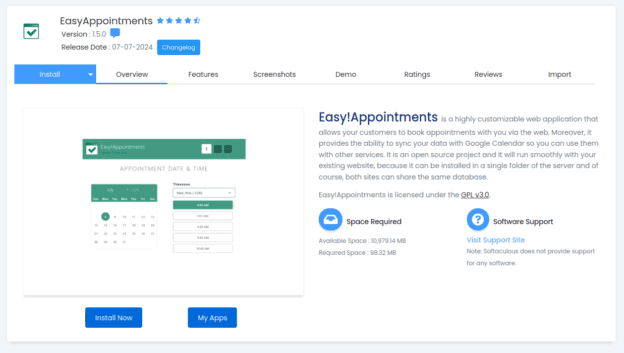In today’s dynamic economic landscape, entrepreneurship has become more accessible than ever. The digital age has demolished traditional barriers to entry, allowing innovative individuals to start businesses with minimal upfront investment. This article explores 15 low-cost business ideas that can help aspiring entrepreneurs transform their skills, passions, and creativity into profitable ventures.
Why Low-Cost Businesses Matter
Before diving into specific ideas, it’s crucial to understand the significance of low-cost business models:
- Reduced Financial Risk: Lower initial investment means less personal financial exposure
- Faster Startup Process: Minimal capital requirements allow for quicker business launch
- Flexibility: Easy to pivot or adjust your business model
- Lower Stress: Reduced financial pressure enables more creative problem-solving
15 Low-Cost Business Ideas
1. Freelance Writing and Content Creation
 Initial Investment: Almost zero Skills Required: Strong writing abilities, subject matter expertise Potential Earnings: $20−100 per hour
Initial Investment: Almost zero Skills Required: Strong writing abilities, subject matter expertise Potential Earnings: $20−100 per hour
Freelance writing offers tremendous flexibility. Platforms like Upwork, Fiverr, and LinkedIn provide access to global clients seeking content for blogs, websites, marketing materials, and technical documentation.
Website Value: A professional portfolio website can showcase your writing samples, testimonials, and service offerings, significantly enhancing your credibility and attracting higher-paying clients.
2. Social Media Management
 Initial Investment: $0−50 for marketing tools Skills Required: Social media platform knowledge, content creation skills Potential Earnings: 500−5,000 per month per client
Initial Investment: $0−50 for marketing tools Skills Required: Social media platform knowledge, content creation skills Potential Earnings: 500−5,000 per month per client
Many small businesses struggle with maintaining an engaging social media presence. By offering comprehensive social media management services, entrepreneurs can help companies grow their online visibility.
Website Benefit: A sleek, professional website demonstrating your social media strategies and past client successes can be a powerful marketing tool.
3. Virtual Assistant Services
Initial Investment: Computer, reliable internet connection Skills Required: Organization, communication, basic technical skills Potential Earnings: $15−50 per hour
Virtual assistants provide administrative support to businesses and entrepreneurs worldwide. Tasks might include email management, scheduling, data entry, and customer support.
Website Advantage: A website can outline your specific services, pricing packages, and include a booking system for potential clients.
4. Online Tutoring and Course Creation

Initial Investment: $0−100 for online course platforms Skills Required: Expertise in a specific subject Potential Earnings: 20−100 per hour, passive income from courses
Share your knowledge by tutoring students online or creating comprehensive digital courses. Subjects can range from academic topics to professional skills like programming, design, or language learning.
Website Impact: A dedicated website can host your courses, provide student testimonials, and integrate with learning management systems.
5. Digital Marketing Consulting
 Initial Investment: 0−200 for marketing tools Skills Required: Marketing strategy, platform expertise Potential Earnings: 50−250 per hour
Initial Investment: 0−200 for marketing tools Skills Required: Marketing strategy, platform expertise Potential Earnings: 50−250 per hour
Help businesses improve their online marketing strategies, focusing on areas like SEO, content marketing, email campaigns, and social media advertising.
Website Significance: A well-designed website serves as a living portfolio of your marketing expertise and successful case studies.
6. Dropshipping E-commerce
Initial Investment: 0−500 Skills Required: Basic marketing, customer service Potential Earnings: 1,000−5,000 per month
Create an online store without maintaining inventory. Partner with suppliers who ship products directly to customers, allowing you to focus on marketing and customer experience.
Website Necessity: An e-commerce website is crucial, serving as your digital storefront and primary sales channel.
7. Graphic Design Services
 Initial Investment: 0−300 for design software Skills Required: Design skills, creativity Potential Earnings: 25−150 per hour
Initial Investment: 0−300 for design software Skills Required: Design skills, creativity Potential Earnings: 25−150 per hour
Offer logo design, branding materials, social media graphics, and web design services to businesses and individuals.
Website Advantage: A portfolio website can showcase your design aesthetic and attract higher-quality clients.
8. Podcast or YouTube Content Creation

Initial Investment: 100−500 for basic equipment Skills Required: Communication skills, niche expertise Potential Earnings: Ad revenue, sponsorships, affiliate marketing
Create engaging content in a specific niche, monetizing through advertising, sponsorships, and affiliate marketing.
Website Role: A dedicated website can host your content, provide additional resources, and create additional monetization opportunities.
9. Photography and Stock Photography
Initial Investment: 500−2,000 for camera equipment Skills Required: Photography skills, editing knowledge Potential Earnings: 100−500 per photo set
Sell photos on stock photography websites or offer local photography services for events, portraits, and businesses.
Website Function: Showcase your portfolio, pricing, and make direct bookings.
10. Handmade Crafts and Digital Products

Initial Investment: 50−200 for supplies or digital tools Skills Required: Creativity, craft skills Potential Earnings: 500−3,000 per month
Create and sell handmade items or digital products like printables, templates, or digital art on platforms like Etsy.
Website Importance: An independent website provides more control and can reduce platform fees.
11. Translation Services
Initial Investment: $0 Skills Required: Fluency in multiple languages Potential Earnings: 20−50 per hour
Offer translation services for documents, websites, and multimedia content.
Website Benefit: Demonstrate language capabilities and provide easy client communication.
12. Personal Fitness or Nutrition Coaching
 Initial Investment: 0−200 for certification Skills Required: Fitness/nutrition knowledge Potential Earnings: 50−200 per client session
Initial Investment: 0−200 for certification Skills Required: Fitness/nutrition knowledge Potential Earnings: 50−200 per client session
Provide online coaching, meal plans, and workout strategies.
Website Value: Share client transformations, offer program details, and integrate booking systems.
13. Web Development
 Initial Investment: 0−300 for development tools Skills Required: Coding knowledge Potential Earnings: 50−200 per hour
Initial Investment: 0−300 for development tools Skills Required: Coding knowledge Potential Earnings: 50−200 per hour
Build websites for small businesses and entrepreneurs.
Website Significance: Your own website is your most powerful marketing tool in this field.
14. SEO Consulting
Initial Investment: 0−200 for SEO tools Skills Required: Digital marketing knowledge Potential Earnings: 75−250 per hour
Help businesses improve their search engine rankings and online visibility.
Website Function: Demonstrate SEO expertise through your own website’s performance.
15. Print-on-Demand Merchandising
 Initial Investment: $0 Skills Required: Design skills, marketing Potential Earnings: 500−3,000 per month
Initial Investment: $0 Skills Required: Design skills, marketing Potential Earnings: 500−3,000 per month
Create custom designs for t-shirts, mugs, and other products sold through print-on-demand services.
Website Role: Showcase your design portfolio and link to your online store.
The Website: Your Digital Business Card
A professional website is no longer a luxury—it’s a necessity. For entrepreneurs, a website serves multiple critical functions:
- Credibility Building: Demonstrates professionalism and commitment
- Marketing Platform: Showcases services, portfolio, and testimonials
- Lead Generation: Provides contact methods and service information
- 24/7 Sales Tool: Continues marketing even when you’re not working
- Cost-Effective Marketing: Much cheaper than traditional advertising
Conclusion
The digital economy has democratized entrepreneurship. With creativity, skill, and minimal investment, you can transform your passion into a profitable business. Remember, success isn’t just about the idea—it’s about execution, continuous learning, and adaptability.
Pro Tips for Success:
- Start small and scale gradually
- Continuously upgrade your skills
- Network and seek mentorship
- Be patient and persistent
- Invest in your personal brand
Your entrepreneurial journey starts now. Choose an idea that aligns with your skills and passion, create a solid plan, and take that first step towards financial independence.
Disclaimer: Earnings and success vary. These figures are potential estimates and not guaranteed income promises.


 By distilling hours of content into minute-long summaries, marketers can efficiently convey key messages while capturing the viewer’s attention. For instance, imagine a company hosting an engaging webinar on industry trends. Instead of expecting potential customers to invest an hour into watching the entire session, marketers can utilize the video summarization tool to craft concise summaries. These bite-sized videos can be shared across social media platforms, newsletters, and websites, maximizing reach and engagement.
By distilling hours of content into minute-long summaries, marketers can efficiently convey key messages while capturing the viewer’s attention. For instance, imagine a company hosting an engaging webinar on industry trends. Instead of expecting potential customers to invest an hour into watching the entire session, marketers can utilize the video summarization tool to craft concise summaries. These bite-sized videos can be shared across social media platforms, newsletters, and websites, maximizing reach and engagement. In the realm of social media, visuals command attention. With 1Min.ai, marketers can generate AI-powered social media clips tailored for platforms like Instagram, TikTok, and Twitter. These short, dynamic video snippets serve as powerful tools for engaging audiences and driving traffic to websites or landing pages.
In the realm of social media, visuals command attention. With 1Min.ai, marketers can generate AI-powered social media clips tailored for platforms like Instagram, TikTok, and Twitter. These short, dynamic video snippets serve as powerful tools for engaging audiences and driving traffic to websites or landing pages.


 Referral marketing has evolved significantly, facilitating opportunities for businesses to engage customers in innovative ways. Traditional referral programs often focus solely on financial rewards. However, creative strategies can enhance these campaigns and foster deeper connections. One such approach is gamifying referral programs, where businesses can create a fun and competitive environment for users. By implementing point systems, leaderboards, or tiered rewards, companies can encourage customers to participate actively, ultimately driving more referrals. For instance, Dropbox famously used this method, allowing users to earn additional storage space by referring friends, which resulted in a significant increase in their user base.
Referral marketing has evolved significantly, facilitating opportunities for businesses to engage customers in innovative ways. Traditional referral programs often focus solely on financial rewards. However, creative strategies can enhance these campaigns and foster deeper connections. One such approach is gamifying referral programs, where businesses can create a fun and competitive environment for users. By implementing point systems, leaderboards, or tiered rewards, companies can encourage customers to participate actively, ultimately driving more referrals. For instance, Dropbox famously used this method, allowing users to earn additional storage space by referring friends, which resulted in a significant increase in their user base. Referral marketing platforms serve as comprehensive solutions that allow businesses to create, monitor, and optimize their referral campaigns. These platforms provide users with the capability to set up personalized rewards for customers who successfully refer new clients. By utilizing these specialized tools, companies can effortlessly manage their referral programs, ensuring that both the referrer and the referred receive their incentives. This tech-driven method transforms conventional referral marketing into a seamless experience for all parties involved.
Referral marketing platforms serve as comprehensive solutions that allow businesses to create, monitor, and optimize their referral campaigns. These platforms provide users with the capability to set up personalized rewards for customers who successfully refer new clients. By utilizing these specialized tools, companies can effortlessly manage their referral programs, ensuring that both the referrer and the referred receive their incentives. This tech-driven method transforms conventional referral marketing into a seamless experience for all parties involved.

 Initial Investment: Almost zero Skills Required: Strong writing abilities, subject matter expertise Potential Earnings: $20−100 per hour
Initial Investment: Almost zero Skills Required: Strong writing abilities, subject matter expertise Potential Earnings: $20−100 per hour Initial Investment: $0−50 for marketing tools Skills Required: Social media platform knowledge, content creation skills Potential Earnings: 500−5,000 per month per client
Initial Investment: $0−50 for marketing tools Skills Required: Social media platform knowledge, content creation skills Potential Earnings: 500−5,000 per month per client
 Initial Investment: 0−200 for marketing tools Skills Required: Marketing strategy, platform expertise Potential Earnings: 50−250 per hour
Initial Investment: 0−200 for marketing tools Skills Required: Marketing strategy, platform expertise Potential Earnings: 50−250 per hour Initial Investment: 0−300 for design software Skills Required: Design skills, creativity Potential Earnings: 25−150 per hour
Initial Investment: 0−300 for design software Skills Required: Design skills, creativity Potential Earnings: 25−150 per hour

 Initial Investment: 0−200 for certification Skills Required: Fitness/nutrition knowledge Potential Earnings: 50−200 per client session
Initial Investment: 0−200 for certification Skills Required: Fitness/nutrition knowledge Potential Earnings: 50−200 per client session Initial Investment: 0−300 for development tools Skills Required: Coding knowledge Potential Earnings: 50−200 per hour
Initial Investment: 0−300 for development tools Skills Required: Coding knowledge Potential Earnings: 50−200 per hour Initial Investment: $0 Skills Required: Design skills, marketing Potential Earnings: 500−3,000 per month
Initial Investment: $0 Skills Required: Design skills, marketing Potential Earnings: 500−3,000 per month